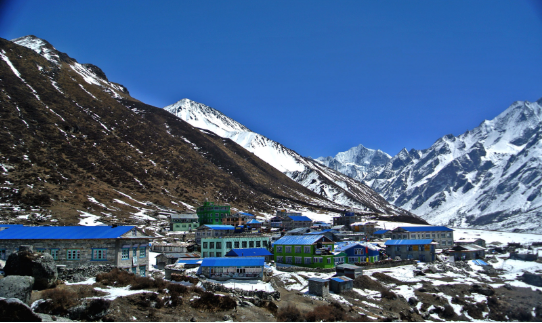The Langtang Valley Trek is one of Nepal’s most popular and rewarding trekking destinations, combining stunning mountain views, rich cultural experiences, and accessible routes for trekkers of all levels. Located north of Kathmandu near the Tibetan border, this trek offers an incredible opportunity to explore the Langtang National Park, known for its biodiversity, traditional Tamang culture, and dramatic Himalayan landscapes. Whether you are a seasoned trekker or a beginner, the Langtang Valley Trek is a journey that captivates every adventurer’s heart.
Highlights of Langtang Valley Trek
- Breathtaking Scenery
The Langtang Valley is often referred to as the “Valley of Glaciers” due to its numerous glaciers surrounded by towering peaks like Langtang Lirung (7,227m), Gang Chhenpo (6,388m), and Dorje Lakpa (6,966m). The lush forests, terraced fields, and serene rivers enhance the beauty of the trek. - Cultural Richness
The trek offers a window into the life of the Tamang and Tibetan communities. Visitors can experience their warm hospitality, traditional architecture, and unique cultural practices, including vibrant monasteries and sacred prayer wheels. - Langtang National Park
As Nepal’s first Himalayan national park, Langtang National Park is a treasure trove of flora and fauna. Trekkers might encounter rare species like red pandas, Himalayan black bears, and snow leopards. - Moderate Trekking Difficulty
The trek is considered moderate, making it accessible for those with basic fitness levels. It typically takes 7–10 days to complete, with a manageable altitude of up to 4,984 meters at Kyanjin Ri.
Trekking Itinerary: A Quick Overview
- Day 1: Kathmandu to Syabrubesi
The journey begins with a drive from Kathmandu to Syabrubesi, a picturesque village that serves as the starting point. - Day 2-4: Trek to Lama Hotel and Langtang Village
Trekkers pass through dense forests of oak, rhododendron, and bamboo while ascending to Lama Hotel and eventually to Langtang Village, a settlement recovering from the 2015 earthquake. - Day 5-6: Explore Kyanjin Gompa
From Langtang Village, trekkers continue to Kyanjin Gompa, home to ancient monasteries and traditional cheese factories. A hike to Kyanjin Ri offers panoramic views of the Himalayas. - Day 7-8: Descend to Syabrubesi and Return to Kathmandu
The trek concludes with a descent to Syabrubesi and a drive back to Kathmandu.
Best Time for Langtang Valley Trek
The best seasons for trekking in Langtang Valley are spring (March-May) and autumn (September-November). During these times, the weather is clear, providing unobstructed mountain views and blooming rhododendron forests. Winter and monsoon treks are also possible but come with challenges like cold temperatures and muddy trails.
What to Pack for the Trek
- Clothing: Layered clothing, waterproof jackets, and thermal wear.
- Footwear: Sturdy trekking boots and comfortable socks.
- Gear: Trekking poles, sleeping bags, and headlamps.
- Essentials: Water bottles, first-aid kits, snacks, and personal identification.
Conclusion
The Langtang Valley Trek is more than just a physical journey; it is a spiritual and cultural experience set against the majestic backdrop of the Himalayas. Its proximity to Kathmandu, coupled with its diverse landscapes and cultural heritage, makes it a perfect choice for those seeking a Himalayan adventure without venturing too far. Whether you’re chasing panoramic views, exploring unique cultures, or simply escaping into nature, the Langtang Valley Trek promises a transformative experience.
Frequently Asked Questions (FAQs)
Q1. How long does the Langtang Valley Trek take?
Typically, the trek takes 7–10 days, depending on the itinerary and acclimatization needs.
Q2. Is the Langtang Valley Trek difficult?
The trek is of moderate difficulty, suitable for trekkers with basic fitness levels. Proper preparation and acclimatization are recommended.
Q3. Do I need a guide for this trek?
While the trail is well-marked, hiring a guide can enhance the experience by providing local insights and ensuring safety.
Q4. Are permits required for this trek?
Yes, trekkers need a TIMS (Trekkers’ Information Management System) card and a Langtang National Park entry permit.
Q5. What is the maximum altitude of the trek?
The highest point is Kyanjin Ri, which stands at 4,984 meters.
Embark on the Langtang Valley Trek to witness nature’s magnificence and embrace a rich cultural tapestry—a truly unforgettable adventure awaits!


















